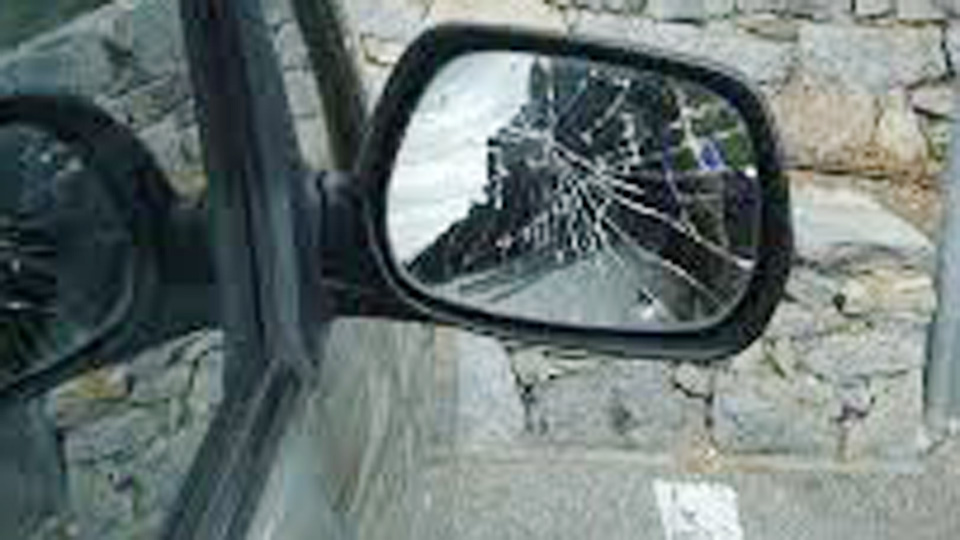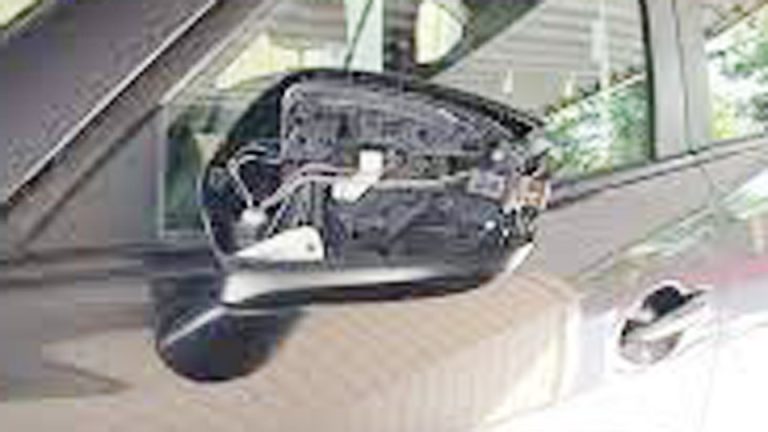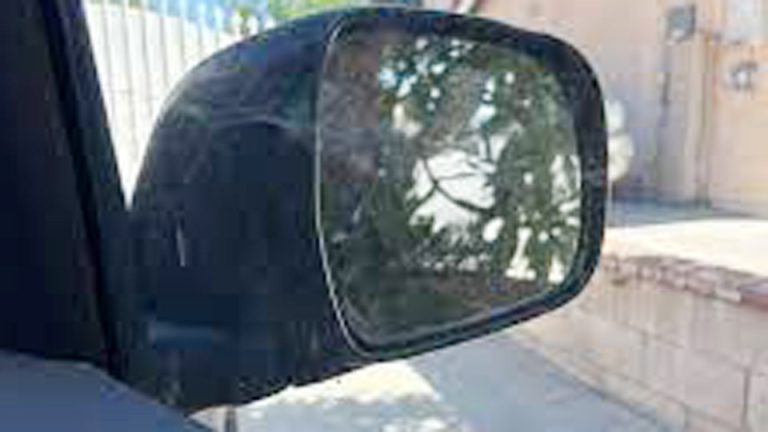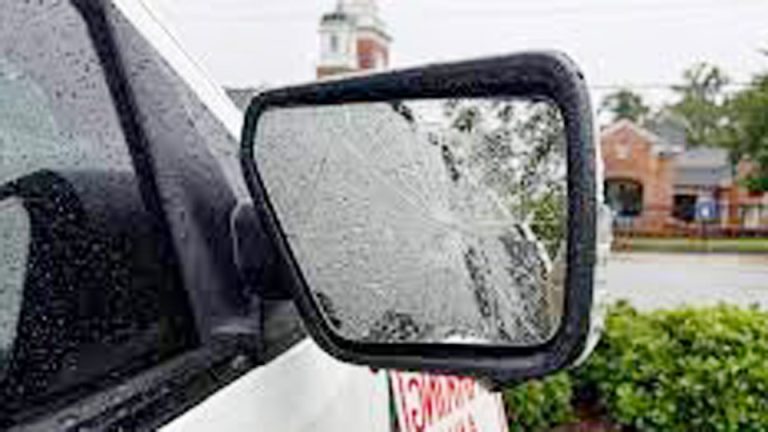A broken side mirror isn’t just an eyesore—it’s a serious safety hazard. Driving with a cracked or missing mirror can make lane changes risky, and in many states, it’s illegal. I’ve replaced plenty of side mirrors in my garage, and one mistake I see car owners make is thinking it’s too complicated to fix themselves.
The truth is, with the right tools and a bit of patience, you can replace a broken side mirror in under an hour. In this guide, I’ll walk you through identifying the right replacement, removing the damaged mirror, and installing the new one safely so your car looks good and drives safely again.

Image by torquenews
Why Side Mirrors Matter for Your Vehicle
Side mirrors, or wing mirrors, are your car’s eyes on the sides. They let you see what’s in your blind spots, making lane changes, parking, and merging safer. A broken or missing side mirror doesn’t just make driving trickier—it can get you pulled over in many states, as it’s a legal requirement in the US.
Beyond safety, a damaged mirror can affect your car’s resale value and even its aerodynamics, slightly impacting fuel efficiency at high speeds. Replacing them promptly keeps you legal, safe, and saves you from bigger headaches down the road.
Common Problems with Side Mirrors
Side mirrors take a beating. Here are the issues I see most in the shop:
- Cracked or shattered glass: Usually from impacts like hitting a mailbox or another car in a tight parking lot.
- Broken housing: The plastic or metal casing can snap from collisions or extreme weather.
- Faulty motors: Power mirrors often fail when the internal motor burns out, leaving you unable to adjust them.
- Loose or wobbly mirrors: Vibrations from rough roads can loosen mounting points over time.
- Fading or fogged glass: Older mirrors lose clarity, making it hard to see clearly.
I once had a customer with a 2015 Toyota Camry whose side mirror was dangling by its wiring after a fender bender. They thought it was a quick glue job, but the whole assembly needed replacing. That’s a common misconception—most side mirrors are a single unit, not just a glass piece you pop in.
When and Why You Need to Replace a Side Mirror
You need to replace a side mirror if:
- The glass is cracked or shattered, distorting your view.
- The mirror won’t adjust (manual or power).
- The housing is broken, exposing wires or internals.
- The mirror is missing entirely (yep, it happens).
Driving with a broken mirror isn’t just risky—it’s illegal in most US states, where laws require at least two functional mirrors (one side and one rearview). Plus, a damaged mirror can fail you during a vehicle inspection. I’ve seen DIYers try to tape mirrors back together, but that’s a temporary fix at best. A proper replacement ensures safety and reliability.
Choosing the Right Side Mirror: OEM vs Aftermarket
When replacing a side mirror, you’ve got two main options: OEM (Original Equipment Manufacturer) or aftermarket. Each has its pros and cons, and I’ve installed both in everything from Fords to Hondas. Here’s a breakdown to help you decide.
What Are OEM Side Mirrors?
OEM mirrors are made by the same manufacturer that built your car—think Ford, Toyota, or GM. They’re designed to match your vehicle’s exact specifications, including fit, wiring, and features like heating or turn signals.
Pros:
- Perfect fit and compatibility.
- Same quality as the original part.
- Often come with a warranty (1-2 years from manufacturers like Dorman or Mopar).
Cons:
- Expensive—often $100–$300 per mirror, depending on the vehicle.
- Limited availability for older models.
- Dealerships sometimes mark them up significantly.
What Are Aftermarket Side Mirrors?
Aftermarket mirrors are made by third-party companies like TYC, Kool Vue, or Dorman (yes, Dorman makes both OEM and aftermarket). They’re designed to fit a range of vehicles but may not be identical to the original.
Pros:
- Cheaper—often $30–$150, depending on features.
- Widely available online (Amazon, AutoZone, RockAuto).
- Decent quality from reputable brands.
Cons:
- Fitment can be slightly off, requiring tweaks during installation.
- Durability varies—some cheap brands fade or crack faster.
- May lack advanced features like auto-dimming or blind-spot monitoring.
OEM vs. Aftermarket Comparison Table
| Feature | OEM Side Mirrors | Aftermarket Side Mirrors |
|---|---|---|
| Price | $100–$300 | $30–$150 |
| Fitment | Perfect, vehicle-specific | Good, but may need adjustments |
| Durability | High (5–10 years) | Varies (2–7 years) |
| Availability | Dealerships, select online retailers | Widely available (Amazon, eBay, etc.) |
| Warranty | 1–2 years | 6 months–1 year |
| Features | Matches original (e.g., heated, signals) | May lack advanced features |
If you drive a newer or high-end vehicle (say, a 2020 BMW or a loaded F-150), go OEM to preserve features like blind-spot monitoring. For older cars or budget builds, a quality aftermarket brand like TYC or Kool Vue gets the job done without breaking the bank. I’ve used TYC mirrors on a 2008 Honda Civic rebuild, and they’ve held up for years.
How to Spot Fake or Low-Quality Parts
The US market is flooded with knockoff parts, especially on sites like eBay. Here’s how to avoid fakes:
Check the brand: Stick to reputable names like TYC, Kool Vue, or Dorman. Unknown brands with prices too good to be true are often junk.
Look at reviews: On Amazon or RockAuto, sort by “verified purchase” reviews to see real user experiences.
Inspect packaging: Genuine parts come in branded boxes with part numbers. Fakes often arrive in plain or flimsy packaging.
Verify part numbers: Cross-check the part number with your vehicle’s VIN or owner’s manual. I once caught a fake Ford mirror because the part number was off by one digit.
If you’re buying aftermarket, check the seller’s return policy. I’ve had to return a mirror that didn’t fit a 2012 Chevy Malibu because the mounting holes were misaligned.
Step-by-Step Guide to Replacing a Side Mirror
Replacing a side mirror is a straightforward job that usually takes 30–60 minutes. I’ve done this on dozens of cars, from a beat-up 2005 Dodge Ram to a sleek 2018 Audi A4. Here’s how to do it right.
Tools You’ll Need
- Flathead and Phillips screwdrivers
- Socket wrench set (usually 8mm or 10mm)
- Trim removal tool (plastic, to avoid scratching)
- Replacement mirror (OEM or aftermarket)
- Clean cloth and rubbing alcohol
- Optional: Torque wrench for precise bolt tightening
Safety Note: Disconnect the car battery if your mirror has power features to avoid electrical shorts. Wear gloves to protect your hands from sharp edges.
Step 1: Remove the Old Mirror
Locate the interior trim panel: Inside the door, near the mirror, there’s a triangular plastic cover (called the sail panel). Pop it off with a trim removal tool or flathead screwdriver. Be gentle—clips break easily.
Disconnect wiring (if power mirrors): Unplug the electrical connector. Some models have a push-tab; others need a small screwdriver to release.
Remove mounting bolts: Use a socket wrench (usually 10mm) to remove the 2–3 bolts holding the mirror to the door. Hold the mirror to prevent it from falling.
Pull the mirror off: Gently wiggle the mirror to detach it from the door. Watch for any stuck wiring or foam gaskets.
Pro Tip: Take a photo of the wiring setup before disconnecting. It’ll save you a headache during reassembly.
Step 2: Prepare the New Mirror
Clean the mounting area: Use rubbing alcohol and a cloth to clean the door’s mounting surface. Remove old adhesive or debris.
Check compatibility: Ensure the new mirror’s mounting holes and wiring match the old one. I’ve seen DIYers buy the wrong side (driver vs. passenger) by mistake.
Test power features: If your mirror has power adjustments or heating, plug it in and test before bolting it down.
Step 3: Install the New Mirror
- Attach the mirror: Line up the mounting holes and hand-tighten the bolts. If there’s a foam gasket, ensure it’s properly seated to prevent water leaks.
- Reconnect wiring: Plug in the electrical connector securely. Tuck wires to avoid pinching.
- Tighten bolts: Use a socket wrench (or torque wrench, if specified—check your vehicle’s manual for torque specs, usually 5–7 Nm). Don’t overtighten, or you’ll crack the housing.
- Replace the trim panel: Snap the sail panel back into place. Press firmly until you hear the clips click.
Step 4: Test the Mirror
- Adjust the mirror (manually or with power controls) to ensure it moves smoothly.
- Check for wobbling or loose bolts.
- If heated or turn-signal features are present, test them by turning on the defroster or blinker.
Common Mistake: Overtightening bolts. I’ve seen cracked mirror housings because someone went Hulk-mode with the wrench. Snug is enough.
Step 5: Clean Up
- Wipe the new mirror with a clean cloth to remove fingerprints.
- Reconnect the battery if you disconnected it.
- Take the car for a test drive to ensure the mirror stays secure and functional.
Anecdote: I once helped a buddy replace the side mirror on his 2010 Jeep Wrangler. He bought a cheap aftermarket mirror that didn’t come with a gasket, and water seeped into the door during a rainstorm, shorting the power window. Always check for a proper seal!
Maintenance Tips for Side Mirrors
To make your new side mirror last:
- Clean regularly: Use glass cleaner and a microfiber cloth to keep the mirror clear. Avoid abrasive materials that scratch the glass.
- Check adjustments: Power mirrors can drift out of alignment. Recalibrate them monthly.
- Inspect for looseness: Vibrations can loosen bolts over time. Check every 6 months with a socket wrench.
- Protect in winter: If your mirror is heated, use it to prevent ice buildup. For non-heated mirrors, gently tap off ice to avoid cracking.
Common Mistakes and How to Avoid Them
Buying the wrong mirror: Double-check your vehicle’s year, make, model, and side (driver or passenger). For example, a 2017 Honda Accord mirror won’t fit a 2018 model due to design changes.
Ignoring wiring: If your car has power mirrors, ensure the new mirror matches the connector type. I’ve seen mismatched plugs cause hours of frustration.
Skipping the gasket: A missing or damaged foam gasket can let water into the door, ruining electronics.
Forgetting to test: Always test the mirror before finishing the job. I learned this the hard way when a customer drove off with a non-working power mirror.
US Market Insights: Brands and Availability
In the US, side mirrors are easy to find, but availability depends on your vehicle. For popular models like the Ford F-150, Toyota Corolla, or Chevy Silverado, you’ll find OEM and aftermarket options at:
- Dealerships: Best for OEM but pricier (e.g., $200 for a Ford OEM mirror).
- AutoZone/O’Reilly: Stock TYC and Dorman mirrors, often $50–$100.
- Amazon/RockAuto: Huge selection of aftermarket mirrors, starting at $30. Check shipping times for rare models.
- eBay: Good for used OEM mirrors, but verify condition and part numbers.
For luxury brands like BMW or Mercedes, OEM is often the only way to get features like auto-dimming or blind-spot monitoring. Aftermarket mirrors for these cars rarely match the original specs.
Conclusion: Make Smarter Side Mirror Choices
Replacing a broken side mirror is a manageable DIY job that saves you money and keeps your car safe and legal. Whether you go OEM for a perfect match or aftermarket for budget savings, the key is choosing a quality part and installing it carefully. Double-check compatibility, use the right tools, and don’t skip testing.
Keep a small socket wrench set in your toolbox—it’s a lifesaver for quick repairs like this. With a little patience, you’ll have a new mirror installed and be back on the road in no time.
FAQ: Common Side Mirror Questions
How Much Does It Cost to Replace a Side Mirror?
Costs vary: OEM mirrors run $100–$300, while aftermarket options are $30–$150. Labor at a shop adds $50–$100, but DIY saves that cost. Prices depend on your vehicle and features like power or heating.
Can I Replace Just the Mirror Glass?
Sometimes. Some models (like certain Toyotas) have replaceable glass, costing $10–$30. Check your owner’s manual. If the housing or motor is damaged, replace the whole unit.
How Do I Know If My Mirror Is OEM or Aftermarket?
Check the part number on the mirror or box against your vehicle’s manual. OEM mirrors often have the car brand’s logo (e.g., Ford, Honda). Aftermarket ones list brands like TYC or Kool Vue.
Are Power Mirrors Harder to Replace?
Not really. The process is the same, just with an extra step to disconnect/reconnect wiring. Ensure the new mirror’s connector matches your car’s harness.
Can I Drive Without a Side Mirror?
It’s illegal in most US states to drive without at least one functional side mirror. You risk a ticket or failing a vehicle inspection. Replace it ASAP for safety.



